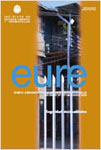Población inmigrante y espacio urbano. Indicadores de segregación y pautas de localización
DOI:
https://doi.org/10.4067/S0250-71612006000300004Palabras clave:
desigualdad social, localización, migración, segregaciónResumen
Dado el importante crecimiento de la población inmigrante en España, es interesante estudiar su distribución sobre el territorio urbano. Desde la estadística se han propuesto diferentes indicadores que tienen una larga tradición, y que permiten cuantificar la segregación de grupos de población minoritarios. Mediante la aplicación de estas herramientas a la realidad de la ciudad de Barcelona y su región metropolitana, se muestra su utilidad a la hora de analizar la segregación residencial dentro de una ciudad, y detectar las pautas que rigen este fenómeno. Los resultados muestran que la segregación difiere según el grupo estudiado. Una nueva perspectiva de la segregación se obtiene con la utilización de indicadores diseñados mediante elementos de estadística espacial. La combinación de todas estas medidas representa un procedimiento útil para el análisis de la distribución de la población inmigrante en las zonas urbanas, su utilidad se extiende a diferentes áreas como la sociología, la economía, el urbanismo o las políticas de vivienda.Descargas
Publicado
Cómo citar
Número
Sección
Licencia
Derechos de autor 2006 Revista EURE - Revista de Estudios Urbano Regionales

Esta obra está bajo una licencia internacional Creative Commons Atribución 4.0.
Al momento de aceptar la publicación de sus artículos, los autores deberán formalizar la cesión de derechos de autor a EURE, según las condiciones establecidas por la Revista.
Ésta establece que el autor autoriza a EURE de manera gratuita, exclusiva e ilimitada a reproducir, editar, publicar, distribuir, publicitar, comercializar y traducir el artículo, a cualquier soporte conocido o por conocer y desarrollar.
Del mismo modo, los autores aseguran que el artículo propuesto es original, no publicado y no propuesto para tal fin a otro medio de difusión.


